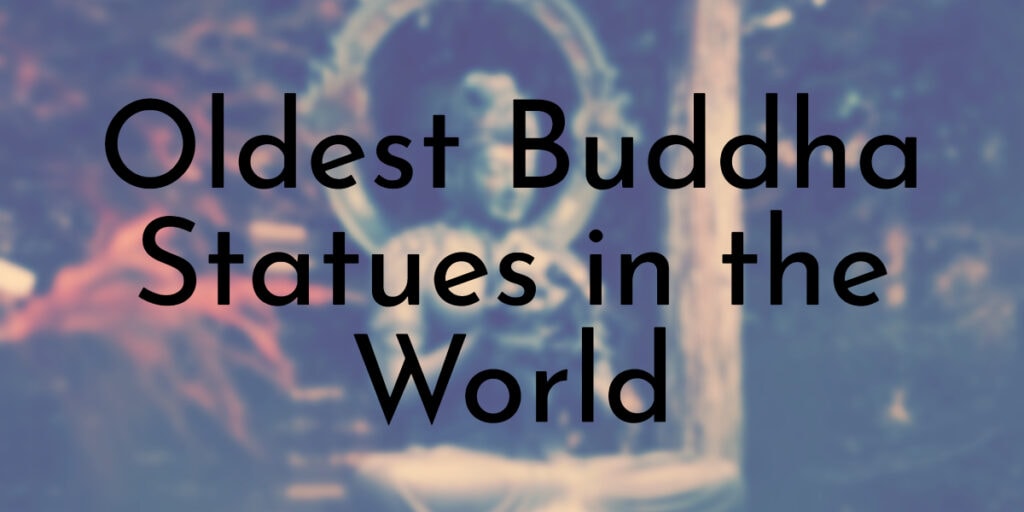The spread of Buddhism and the growth of Buddhist monasteries across Asia led to the emergence of many different Buddhist art forms. In addition to sculptures, paintings, and other works, various famous Buddha statues also emerged during this time period.
However, not all Buddha statues are created equal. Some statues are more advanced than others in terms of their artistic value and accuracy.
The age and origin of each statue also play an important role in determining its significance. Read on and discover the six oldest Buddha statues in the world.
6. Leshan Giant Buddha
Year Created: 803 CE
Location: Sichuan Province, China
Height: 71 m
Main Material Used: Red Bed Sandstones
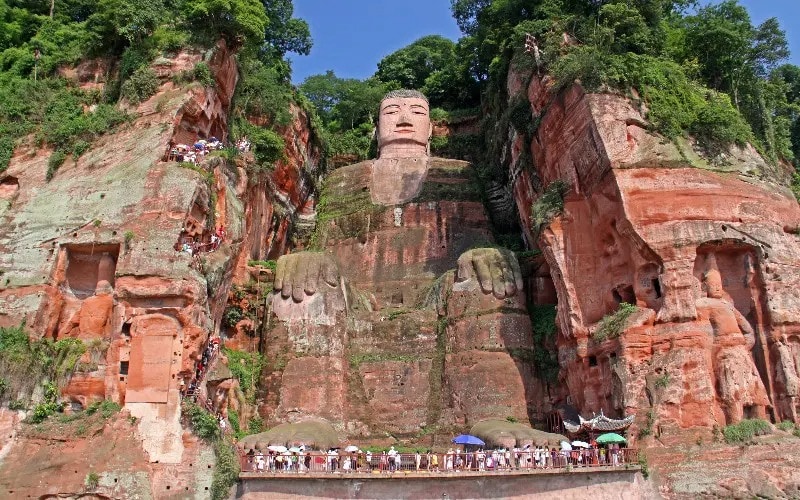
The Leshan Giant Buddha is a statue of Maitreya in a sitting position. The statue is located at the confluence of three rivers, namely, the Min River, Qingyi River, and Dadu River in the southern part of Sichuan province in China, near the city of Leshan.
It is the largest and tallest stone Buddha in the world, and it is by far the tallest pre-modern statue in the world. The statue faces Mount Emei, with the rivers flowing below his feet.
The Leshan Giant Buddha was built during the Tang Dynasty (618–907). It was originally commissioned by a Chinese emperor in 713 AD. He hoped that the Buddha would calm the turbulent waters that plagued the shipping vessels traveling down the river. In total, the construction of the statue took 90 years, and it was finally completed in 803 CE.
The Leshan Giant Buddha is 71 meters (233 ft) tall, making it the largest pre-modern statue in the world.
It is also the tallest Buddhist statue in the world. The statue’s head is 14.7 meters (48 ft) tall and its shoulders are 28 meters (92 ft) wide.
Did You Know?
From the top of the head, visitors can enjoy a panoramic view of the rivers and mountains. The Leshan Giant Buddha is also a UNESCO World Heritage Site, and it is one of the most popular tourist attractions in China.
5. Asuka Daibutsu
Year Created: 609 CE
Location: Nara Prefecture, Japan
Height: 12 m
Main Material Used: Bronze
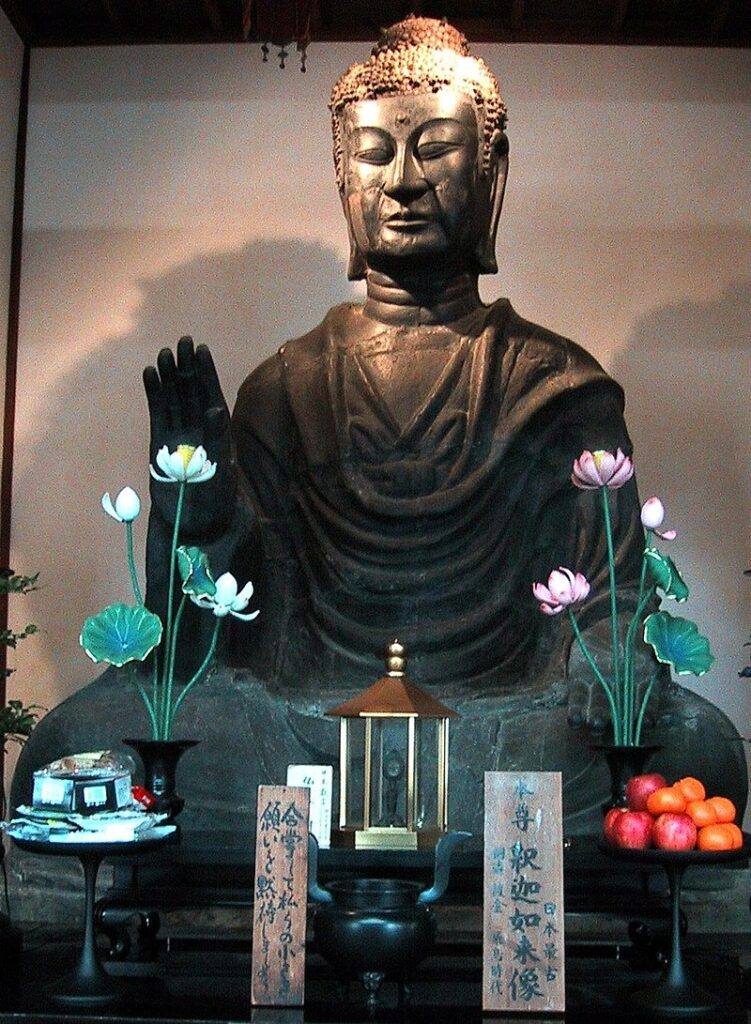
The Asuka Daibutsu is a giant statue of Buddha located in Nara Prefecture in Japan. It is believed to date back to 609 CE, making it one of the oldest surviving Buddha statues in the world. The statue is made of bronze and stands at an impressive 12 meters (39 feet) tall.
Asuka Daibutsu includes its connection to the famous Buddhist monk Kukai, who is said to have brought Buddhism to Japan from China. Kukai is said to have been greatly impressed by the statue, and it is said that he wrote a poem about it.
The Asuka Daibatsu is also said to be the inspiration for the popular Japanese folk song, “Ame no Uzume no Mikoto.”
Did You Know?
The Asuka Daibatsu is a popular tourist attraction and is considered an important cultural asset of Japan. It is one of the few remaining examples of Buddhist art from the Asuka period (538-710), which was a time of great religious and cultural change in Japan.
4. Buddhas of Bamiyan
Year Created: 570 CE (Eastern Buddha) and 618 CE (Western Buddha)
Location: Hazarajat, Afghanistan
Height: 35 m (Eastern Buddha), 53 m (Western Buddha)
Main Material Used: Stone
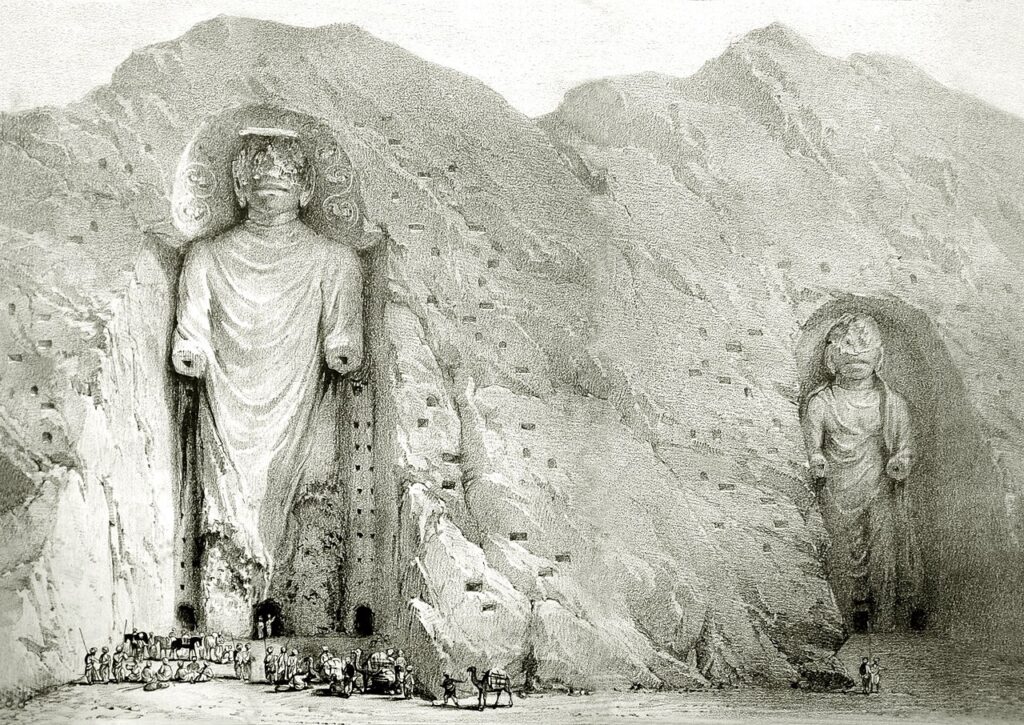
The Buddhas of Bamiyan were two 6th-century monumental statues of standing Buddha carved into the side of a cliff in the Bamiyan valley in the Hazarajat region of central Afghanistan. The statues represented the classic blended style of Gandhara art.
They were 35 and 53 meters (115 and 174 ft) tall, respectively, and the larger one was the tallest statue in the world until its destruction in 2001.
The statues were carved in a sitting position, with the larger one in a more formal pose than the smaller one. They were dressed in simple monastic robes and had their hands resting in their laps in a meditative gesture.
The faces of the statues were probably once adorned with gold and jewels, but these had long since been looted.
Did You Know?
The Buddhas of Bamiyan were destroyed by the Taliban in early 2001, on orders from leader Mullah Mohammed Omar. The Taliban claimed that the statues were idols that were being worshipped by the local people, and that they were therefore against the teachings of Islam.
3. Lumbini Buddhist Shrine
Year Created: 550 BCE
Location: Lumbini, Nepal
Height: 10 m
Main Material Used: Timber
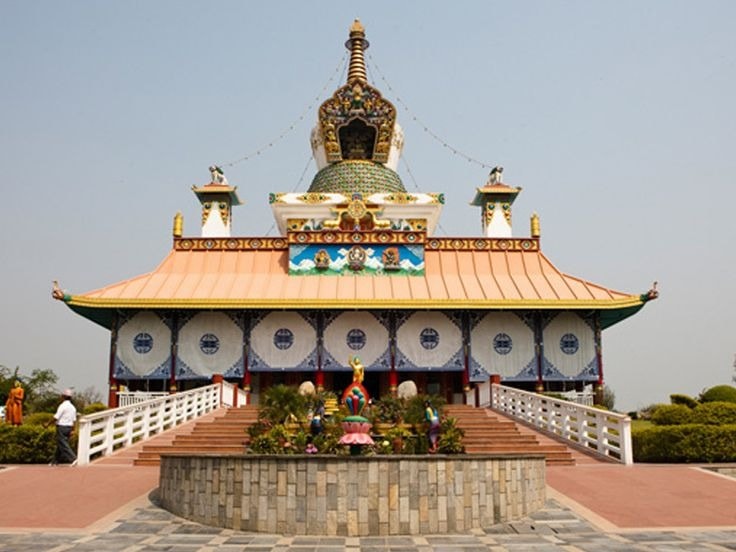
The Lumbini Buddhist Shrine is a statuesque monument located in the ancient city of Lumbini, Nepal. The shrine is said to be one of the oldest extant Buddha statues in the world, and it is certainly one of the most significant historical and religious sites in Nepal.
Lumbini was the birthplace of Siddhartha Gautama, the founder of Buddhism, and the Lumbini Buddhist Shrine is said to mark the spot where he was born. The shrine is a popular pilgrimage destination for Buddhists from all over the world, and it is also a UNESCO World Heritage Site.
The Lumbini Buddhist Shrine is surrounded by a beautiful garden, which was planted by the Nepali royal family in the 19th century.
The garden contains a variety of sacred Buddhist relics, including a Bodhi tree that is said to have been grown from a cutting of the original tree under which Siddhartha Gautama attained enlightenment.
Did You Know?
The shrine is a large complex containing several temples and monasteries, as well as the remains of an ancient stupa and palace.
2. The Standing Buddha Statues
Year Created: c. 3 or 4 CE
Location: Tokyo, Japan
Height: 33 ft
Main Material Used: Bronze
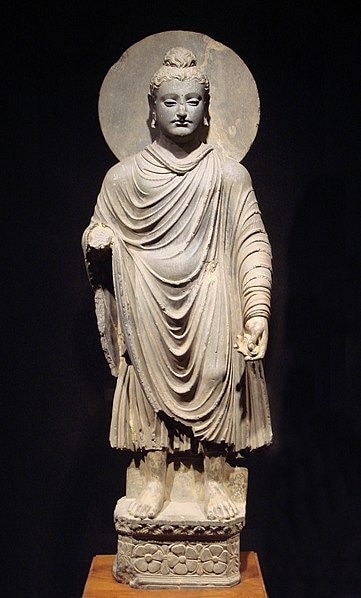
The Standing Buddha Statues in Tokyo were erected around 3 or 4 CE in Japan. The statues are located in the Ueno district of Tokyo. The statues are made of bronze and are approximately 33 feet high.
The statues are among the world’s oldest surviving wooden Buddhist statues and are some of the most renowned examples of Japanese religious art.
The statues are also among the most popular tourist attractions in Tokyo, with visitors coming from around the world to see them.
Did You Know?
Among the statue’s other interesting facts is that it is said that the Buddha’s right hand was modeled after the hand of the emperor at the time of its construction.
1. Seated Buddha Statues
Year Created: c. 2 or 3 CE
Location: Gandhara, Pakistan
Height: 95 cm
Main Material Used: Stone
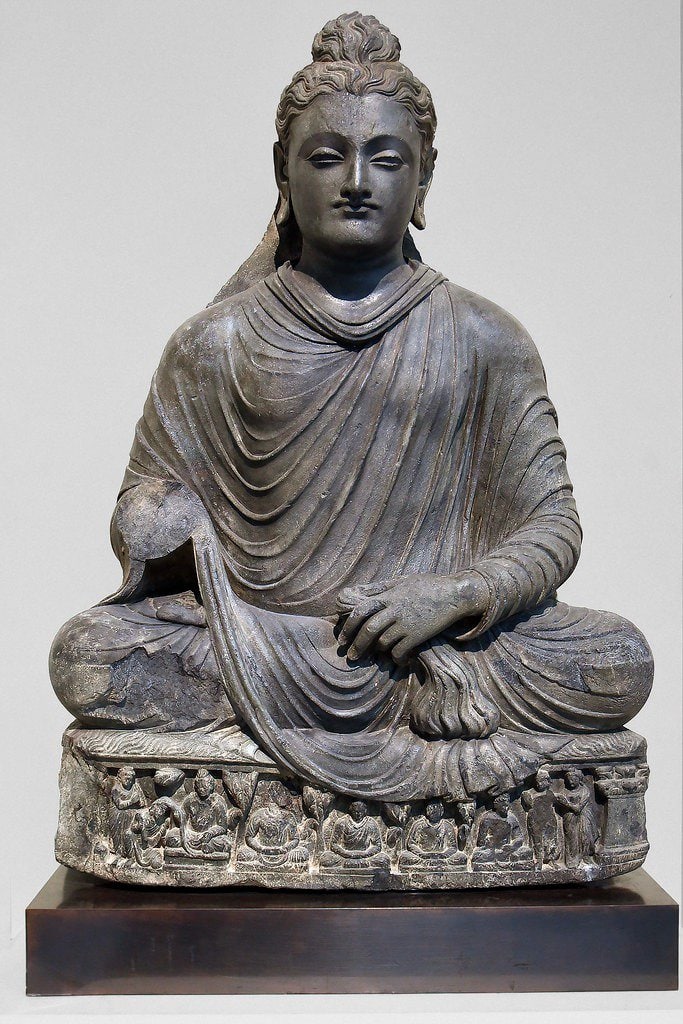
The Seated Buddha Statue in Gandhara, Pakistan, is considered the oldest and most famous Buddha statue in the world. The statue is thought to date back around 2 or 3 CE.
Interestingly, the statue is also thought to have originated from Taxila, which was an important Buddhist center during that time.
Additionally, the statue is said to be decorated with a unique hair style and jewelry that is not found on any other Buddhist statues. In addition, the statue has been extensively damaged over the years, but has been restored in the past and is currently on display at the Taxila Museum.
Did You Know?
The statue is also known for its intricate carvings and its striking resemblance to the Buddha statues found in Tibet.


